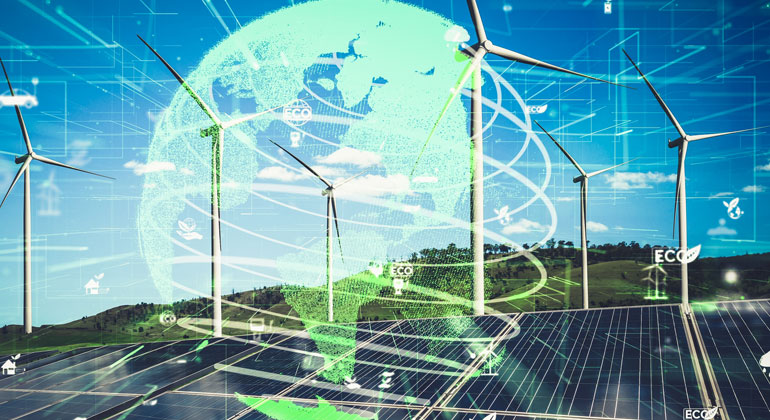Green energy in abundance
“Sorry, pessimists, the energy problem has been solved.” Ulrich Fichtner, a colleague at SPIEGEL, is almost right with this description of the energy crisis (Ulrich Fichtner: Geboren für die großen Chancen, Spiegel-Buch-Verlag 2023).
Right: The problem is solvable, but it is far from being solved. The energy question is the question of survival in the 21st century. We know what we have to do, but we are not yet doing enough of what we know. The new solar dynamic is: cheaper, better, faster. We can still win the climate war.
At least things are moving in the right direction. Examples:
- We have seen a 90 percent reduction in the cost of a kilowatt-hour of solar power within two decades.
- That is why green electricity is booming worldwide, but also storage technologies.
- Solar and wind energy are the cheapest electricity producers in the world. According to the Fraunhofer Institute for Solar Energy Systems ISE, photovoltaics with battery storage is now also cheaper than electricity from conventional power plants.
- The photo (right) shows one of the largest photovoltaic plants in the world in Abu Dhabi. It is expected to be four times as large by 2030 and will then be able to produce as much electricity as around 15 medium-sized nuclear power plants.
- We have global growth rates of renewable energies of 40, 50 and 60 percent per year.
- In Germany, renewables were already the largest source of electricity generation in 2024 – almost two-thirds renewable and only one-third fossil.
- According to the calculations of the International Energy Agency (IEA), this will be the case globally in 2027.
- The World Energy Outlook, which the IEA publishes in Paris every year, assumes that the demand for fossil energy sources will reach its peak in 2025. Although the global economy will still be growing even then, CO2 emissions will shrink.
- The energy transition is in full swing worldwide. I agree with my colleague Ulrich Fichtner when he writes: “A renewable economic miracle is sweeping the globe” (page 87).
- Even in China, sun and wind have overtaken coal in 2024, which seemed unthinkable just recently.
- Not only the United States, but also Germany has decided to produce its electricity completely CO2-free by 2035.
- The European Union has doubled its share of green electricity from the beginning of 2022 to the end of 2023.
- Costa Rica, Iceland and Kenya already produce almost all of their electricity from renewable sources, but from very different sources, due to their different geographies.
- China aims to produce half of all renewable electricity worldwide by 2027.
- The United Arab Emirates, Morocco, Norway and Chile are pursuing ambitious plans for the production of solar hydrogen.
- In addition to China, the United States, Egypt and Morocco are investing heavily in photovoltaics.
- The ten ASEAN countries in East Asia want to increase their share of renewable energies by 70 percent by 2027 compared to 2023 – Brazil, Cuba, Argentina, Mali and other countries in Central and South Africa have similar goals.
Climate crisis?

Children born today will be able to experience a climate without a crisis in 2050 – when they are 25. In the future, people all over the world will be the winners of the solar world revolution if they produce renewable electricity for one or two euro cents. Fortunately for us, the plans for a better world with peaceful coexistence without the exploitation of people and nature are on the table worldwide.
In spring 2024, the Minister of Energy of Abu Dhabi told me that his country was already producing a kilowatt-hour of solar power for 0.7 euro cents. The figures show that the world is electrifying itself and developing economically at a previously unimaginable pace. On this point, too, I can agree with Ullrich Fichtner: “A child born today will no longer have to worry too much about the world’s energy supply on his 25th birthday.” (Page 86).
This reminds me of a new book by couples therapist Matthias Jung about the miracle of change. He writes: “It is not where the wind blows that determines our path, but how we set our sails.” (Matthias Jung: Segel setzen – Das Wunder der Wandlung, emuverlag).









